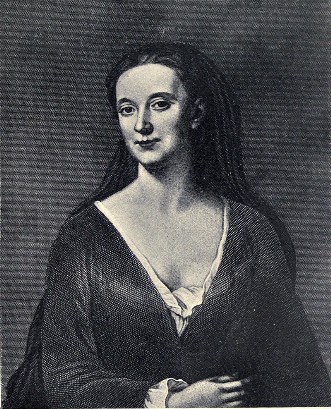
Lady Grizel Baillie
25 December 1665 – 6 December 1746
Songwriter
Lady Grizel Baillie was a Scottish songwriter.
The lantern she used when visiting her father in hiding, in the Museum of Scotland.
Born at Redbraes Castle, Berwickshire, Grizel Hume was the eldest daughter of Sir Patrick Hume, Bt (later Earl of Marchmont). When she was twelve years old, she carried letters from her father to a Scottish conspirator in the Rye House Plot, Robert Baillie of Jerviswood, who was then in prison. Hume's sympathy for Baillie made him a suspected man, and the king's troops occupied Redbraes Castle. He remained in hiding for some time in the crypt of Polwarth Church, where his daughter smuggled him food; but on hearing of the execution of Baillie (1684), he fled to the United Provinces, where his family joined him soon after. They returned to Scotland after the Glorious Revolution.
In 1692, Lady Grizel married George Baillie, son of the patriot. The couple had first met when they were twelve, and supposedly fell in love at that point. What is known for certain is that after returning to Scotland, Lady Grizel turned down the offer to be one of Queen Mary's maids of honour, and insisted to her parents on marrying Baillie over a more advantageous match.
Grizel died in London on 6 December 1746, and was buried at Mellerstain on 25 December, her eighty-first birthday.
Her elder daughter, Lady Grizel Murray of Stanhope, had in her possession a manuscript in prose and verse of her mother's. Some of the songs had been printed in Allan Ramsay's Tea-Table Miscellany.
Lady Grizel Baillie's account books, meticulously kept from 1692 to 1746, reveal information about social life in Scotland in the 18th century. Her entries begin late into her first year of marriage and finish just before her death, and consist of more than a thousand pages of entries. In 1911 the Scottish Historical Society published a 400-page scholarly edition of Lady Grizel Baillie's accounts, edited by Robert Scott-Moncrieff. This edition focused mainly on the entries from 1692 to 1718, which give extensive details about the early years of the Baillies' marriage, the births and upbringing of their children and the marriages of their daughters. Historians have cited these accounts to demonstrate cost of goods and to provide evidence for the caloric intake of servants during this period.
A great deal is known about George and Grizel Baillie's marriage and family thanks to the biography written by their daughter, Grizel Murray. Although not intended for publication, the biography appeared in print in 1809 in Observations on the Historical Work of the Right Honorable Charles James Fox under the title "Lady Murray's Narrative". George Baillie's Correspondence (1702-1708) was edited by Lord Minto for the Bannatyne Club in 1842.
Lady Grizel was also memorialized by Scottish poet Joanna Baillie, who claimed to be a distant relative, in a poem first published in 1821 in Metrical Legends of Exalted Characters.
To make your own nomination download the nomination form here